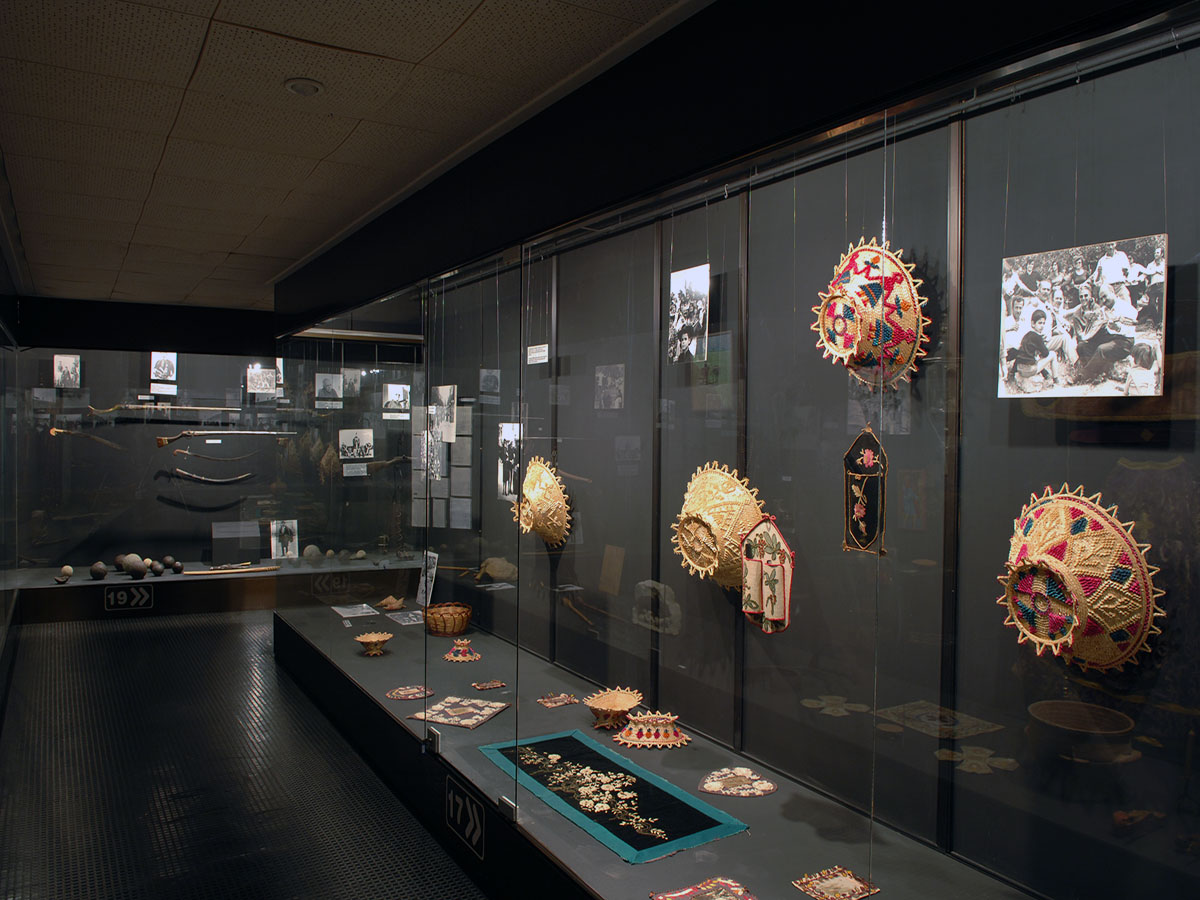Exhibition
Presentation Of Exhibits By Section
Customs And Traditions
The customs and traditions of a homogeneous group, whether a small clan, a race or a whole nation, reflect its level of social development. Cretan rural society is one of the most balanced societies, not only in Greece but in the whole of Europe. This is why there are very few ritual expressions of the symbolic battle between “good” and “evil”, dating from very ancient times when humanity was still weak.
“Domestic” traditions such as warding off the evil eye, conjurations, incense-burning to avert evil and many other minor interventions in favour of good versus evil, are present in very mild forms. The Christian religion is often called upon to fulfil these functions, and the Cretan clergy intercede with simplicity and self-restraint.
To sum up an ethnographic sector presenting few material objects, we note that most Cretan traditions are festive, light-hearted and demonstrate a joyous, positive outlook on life.
RITUAL OBJECTS AND FUNCTION
PANERIA (BASKETS)
These are large open baskets, woven by women from wheat or barley stalks. They are decorated with colourful woven patterns in the same material. They are used exclusively for transporting valuable offerings, such as the bride’s dowry, church offerings or gifts to the best man’s family etc. Similar containers are depicted in Minoan frescoes and used in the same way.

The Pitcher Of Fortune
The “Stamna tou Klidona”, or “Pitcher of Fortune”, is a fortune-telling rite for teenagers of both sexes. Boys and girls gather round one of the village wells and secretly carve the name of their true love on pieces of fruit. The fruit is placed in a pitcher which is then sealed and lowered into the well, where it will remain all night long in the “voiceless water”. Next day, the young people gather again and read out the names on the fruit one by one. As the group knows more or less who’s secretly attracted to whom, the wittiest make up teasing romantic couplets on the spot concerning the presumed couple, but without naming names. The whole process is an opportunity for fun, teasing and innuendo.

CARNIVAL
Carnival is celebrated in strictly traditional Crete as in all countries that preserve this ancient ritual of disguise, which allows public indulgence in sexual taboos in an excessive and satirical form. Absolutely all Cretan villages take part in the carnival with spontaneous disguises and visits to houses, where people have to welcome the masqueraders. The latter don’t speak so as not to be recognised by their voices and engage in various lewd pantomimes, but never harm their hosts. They demand titbits, sweets and wine with grunts and gestures. Apart from the “domestic” carnival, there is also the “general” village celebration in which everyone takes part. In many cases this is regulated by a form of ritual unique to Crete, whose origins remain unknown. There are also innovations to the form and composition of the carnival, but these are ephemeral.
Amulets
Comb Cases
COMMEMORATIVE PHOTOGRAPHS
EMBROIDERY
Women with artistic leanings use fine thread and great care to embroider pieces of silk cocoon, cut into the right shape, onto a large black or green velvet background. They also use coloured silks to embroider plant motifs such as bouquets, pots with flowering plants etc. These works are framed behind glass and hung on the wall to decorate the house instead of paintings, as non-religious paintings were never produced in the Cretan countryside.
